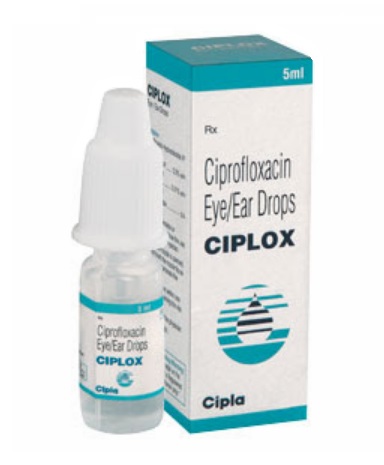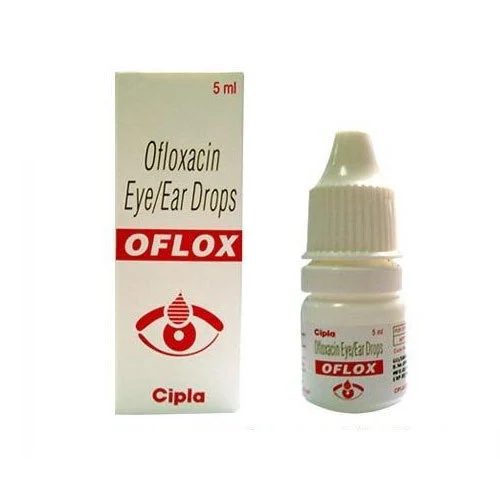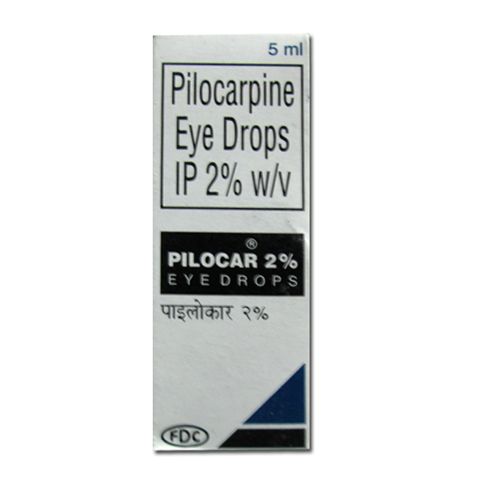Ciplox Eye drop
Ciplox eye drop is a popular name for treating a bacterial infection in the eye. Not only for the eye but is also used as an ear drop. Being a fluoroquinolone antibiotic, it is one of the most effective medicines to prevent cornea infections. Research says it is also the best medicine to treat conjunctivitis or pink eye caused by bacteria. The eye or ear drop works against a vast number of bacteria. After using it, the bacteria are killed immediately. It also prevents the growth of bacteria. Before taking it, you should remember it cannot prevent the infection caused by viruses.
Uses
Ciplox Eye Drops are primarily used to treat bacterial eye infections, such as:
- Bacterial Conjunctivitis: Inflammation of the conjunctiva caused by bacteria.
- Corneal Ulcers: Infections of the cornea, often severe.
- Blepharitis: Inflammation of the eyelids caused by bacteria.
- Keratitis: Infection of the cornea.
These drops work by inhibiting bacterial growth, helping to reduce infection and inflammation in the eye.
How to Use Ciplox Eye Drops ?
- Wash your hands: Clean your hands thoroughly with soap and water to prevent contamination.
- Prepare the bottle: Shake the bottle gently if instructed. Remove the cap carefully without touching the dropper tip to any surface to keep it sterile.
- Tilt your head back: Look up and gently pull down your lower eyelid to form a small pocket.
- Apply the drops: Hold the dropper above your eye and squeeze the bottle to release the prescribed number of drops into the pocket of your lower eyelid.
- Close your eye: After applying the drops, close your eye gently for a few seconds to allow the medication to spread. Do not blink or rub your eye.
- Wipe excess: If any drops spill onto your face, wipe them away with a clean tissue.
- Wash your hands: After using the drops, wash your hands again to remove any medication.
- Avoid contact with the dropper: Never let the tip of the dropper touch your eye, eyelid, or any surface to avoid contamination.
How dose it works ?
Targeting Bacteria: Ciprofloxacin works by targeting and interfering with the bacteria's ability to replicate and repair itself. It does this by inhibiting bacterial enzymes known as DNA gyrase and topoisomerase IV, which are essential for DNA synthesis and cell division.
Bacterial Growth Inhibition: By preventing the bacteria from reproducing and repairing their DNA, ciprofloxacin halts the growth of the bacterial infection in the eye.
Reducing Infection: This leads to a decrease in the number of bacteria causing the eye infection, which helps to reduce symptoms such as redness, swelling, and discharge.
For Bacterial Eye Infections:
- The usual recommended dosage is one to two drops in the affected eye(s) every four to six hours.
- Follow your doctor's instructions closely for the specific duration of treatment.
- The treatment course may last up to seven days or as prescribed by your healthcare provider.
Administration Steps:
- Hand Hygiene: Wash your hands thoroughly before using the eye drops.
- Tilt Head Back: Gently tilt your head back, creating a slight angle.
- Lower Eyelid: Use one hand to pull down your lower eyelid, forming a small pocket.
- Administer Drops: Carefully squeeze the prescribed number of drops into the pocket created by the lower eyelid.
- Close Eyes: Close your eyes gently after administering the drops.
- Press Inner Corner: Press a finger against the inner corner of your eye (nasolacrimal duct) for about one to two minutes. This prevents rapid drainage of the drops and enhances their effectiveness.
Missed Dose:
- If you forget to apply a dose, use it as soon as you remember.
- If your next scheduled dose is approaching, skip the missed dose and continue with your regular dosing schedule.
.Side effects
While Ciplox Eye Drops can be effective in treating bacterial eye infections, like any medication, they may also have some potential side effects. It's important to be aware of these effects and consult your healthcare provider if you experience any unusual symptoms. Common side effects are generally mild and temporary. If you notice severe or persistent symptoms, seek medical attention.
Common Side Effects:
- Mild Discomfort: Some individuals may experience mild discomfort, burning, or stinging in the eyes after using the drops.
- Temporary Blurred Vision: Blurred vision might occur temporarily after using the eye drops. Avoid activities like driving until your vision clears.
- Eye Irritation: Mild irritation or itching in the eyes may occur, particularly during the initial stages of treatment.
- Watery Eyes: You might notice increased tear production or watery eyes as a response to the eye drops.
- Dryness: Paradoxically, some users might experience temporary dryness or gritty sensation in the eyes.
- Redness: Mild redness or increased blood flow to the eyes can be a common reaction.
Less Common Side Effects:
While less common, the following side effects may occur:
- Eye Allergy: Some individuals might develop an allergic reaction to the eye drops, leading to symptoms like itching, redness, and swelling.
- Eye Sensitivity: Increased sensitivity to light (photophobia) could occur temporarily.
- Eye Pain: In rare cases, some users might experience mild eye pain or discomfort.
- Eye Surface Changes: Ciplox Eye Drops might cause minor changes to the surface of the eye, such as the cornea.
Severe Side Effects (Rare):
Although rare, severe side effects are possible. If you experience any of the following, seek medical attention immediately:
- Severe Eye Irritation: If the irritation or discomfort becomes severe or persistent, consult a healthcare professional.
- Severe Allergic Reaction: Symptoms of a severe allergic reaction include severe itching, swelling, severe redness, difficulty breathing, or a rash.
- Vision Changes: Sudden changes in vision, severe eye pain, or persistent blurry vision should be addressed promptly.
Benefits of Ciplox Eye Drops
- Effective Treatment of Bacterial Infections: Ciplox targets and kills bacteria causing eye infections, offering effective relief from conditions like conjunctivitis, corneal ulcers, blepharitis, and keratitis.
- Fast Acting: The antibiotic works quickly to stop bacterial growth, helping to reduce symptoms like redness, swelling, and discharge in a short amount of time.
- Localized Treatment: By applying the drops directly to the infected area, Ciplox provides targeted treatment, ensuring the medication works where it's needed most, with minimal side effects.
- Convenient Use: The drops are easy to apply and allow for direct treatment to the eye, providing a non-invasive option for treating eye infections.
- Prevention of Complications: Treating bacterial eye infections with Ciplox can help prevent the infection from spreading or causing more severe complications, such as vision loss or scarring.
- Reduces Pain and Discomfort: As the infection heals, Ciplox helps reduce discomfort like itching, burning, or sensitivity to light associated with bacterial eye infections.
Precautions
When using Ciplox Eye Drops, avoid contact with the dropper tip to prevent contamination. Do not wear contact lenses during treatment. If pregnant, breastfeeding, or allergic to ciprofloxacin, consult your doctor before use. Inform your doctor of any other medications you're taking to avoid interactions.
Use only as directed to prevent resistance or complications. If you experience severe irritation, vision changes, or an allergic reaction, stop using the drops and seek medical advice immediately.
Frequently asked question
Conclusion
Ciplox Eye Drops, containing ciprofloxacin, are used to treat bacterial eye infections. The dosage typically starts with frequent applications in the first couple of days, then decreases over time. For conditions like conjunctivitis, it's often 1-2 drops every few hours, while more severe infections like corneal ulcers may require even more frequent dosing.
Your review is submitted successfully. It will be live after approval, and it takes up to 24 hrs.







